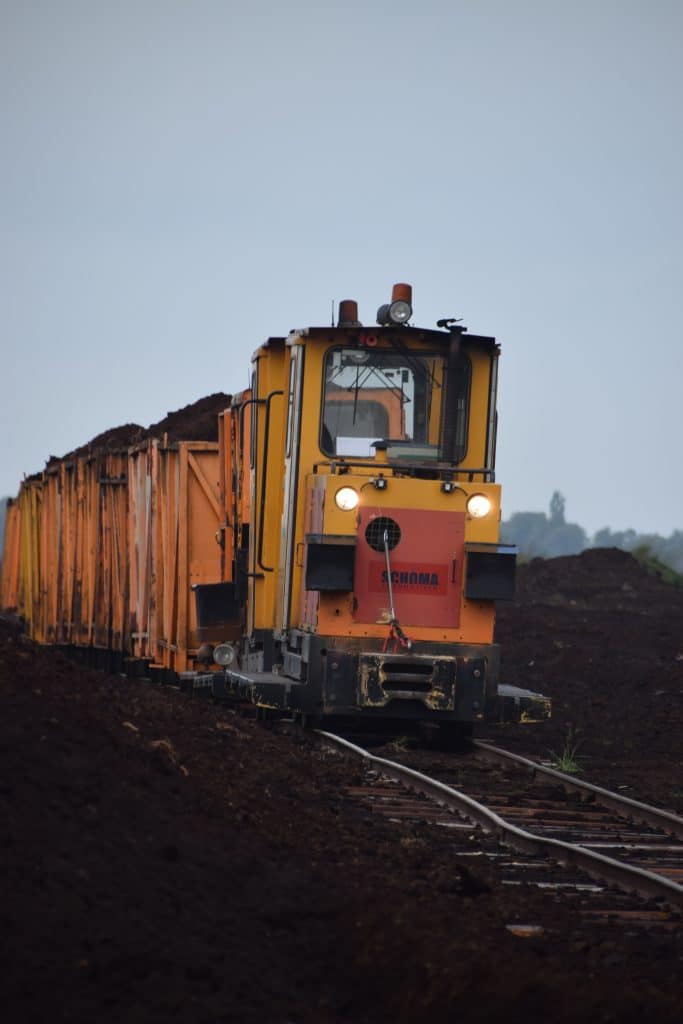The last train from South Field
Bird reserve with a cycle path
Groß Hesepe, Südfeld (South Field), subdivision 28. Conditions are hazy. The cars of the narrow-gauge bog railway are fully loaded. Heinz Rudolf Brüning starts up the engine, emerges from the driver’s cab, steps onto the running board and sprinkles sand on the tracks to improve the train’s grip. It’s the last train ever to leave South Field for Schöninghsdorf in the Emsland region, and it marks not only the end of an era, but also the start of something new.

Preparation for re-wetting
But now the extraction permit is running out. Subdivisions 29 – 33, in which Klasmann-Deilmann was still obtaining peat in recent years, are to become semi-natural habitats thanks to the re-wetting process. This involves Klasmann-Deilmann preparing the various subfields with hydraulic and tracked excavators, resulting in hollows and ridges. This helps rainwater to collect in the depressions and these areas to remain wet. Overflow channels are also necessary for water regulation.
“When you’re out on the bog at 5 a.m., there are birds, everything’s covered by a layer of hoar frost – that’s nature at its best,” Pirsig continues. It will certainly be a strange feeling to just pass by this place after having spent years working here. It was in 1983 that excavations began in subdivision no. 28. Back then, industrial peat, which was used for manufacturing activated-carbon filters, was still obtained in three shifts. “The excavator sometimes had to be turned round at night when it came to the end of a given subfield,” Pirsig recalls.
In 1997, the last of the white peat was cut in South Field. A new permit was approved from 2000, under which extraction from a still virtually untouched part of the site had to be discontinued in order that operations in subdivisions 28 – 33 could be extended. The last of the industrial peat, which is required for manufacturing particularly high-quality activated-carbon filters, was obtained here in 2004. Then, from 2005, frozen black peat was excavated and harvested from the area. In its final years, the bog railway carried 100,000 cubic metres of peat to the substrate factory in Schöninghsdorf every year.
Pirsig spells out the final steps for Klasmann-Deilmann in South Field: “Removing the points, levelling the tracks and that’s it.” Then the regional peat board will come in to re-wet the site. The bird reserve is intended to provide a habitat for rare species; sheep will graze there to keep vegetation growth down.
In connection with Dalum-Wietmarscher Moor and Georgsdorfer Moor (a designated EU bird protection zone), which itself is part of the transnational Bourtanger Moor-Bargerveen peatland nature reserve, there will soon be an orbital cycle path around the area. Cyclists and walkers will then be able to enjoy views of the expansive bog landscape from vantage points.
One final glance takes in the bog railway, now no more than a dot on the horizon.